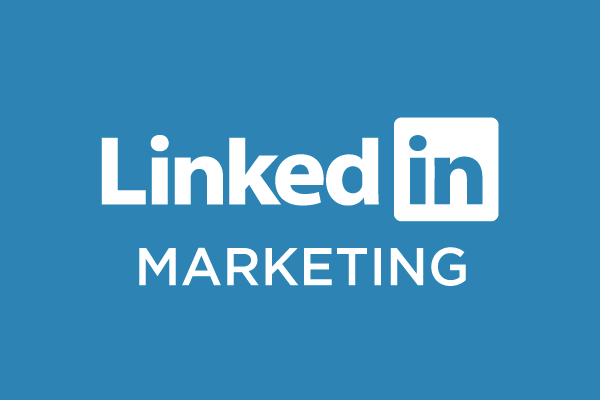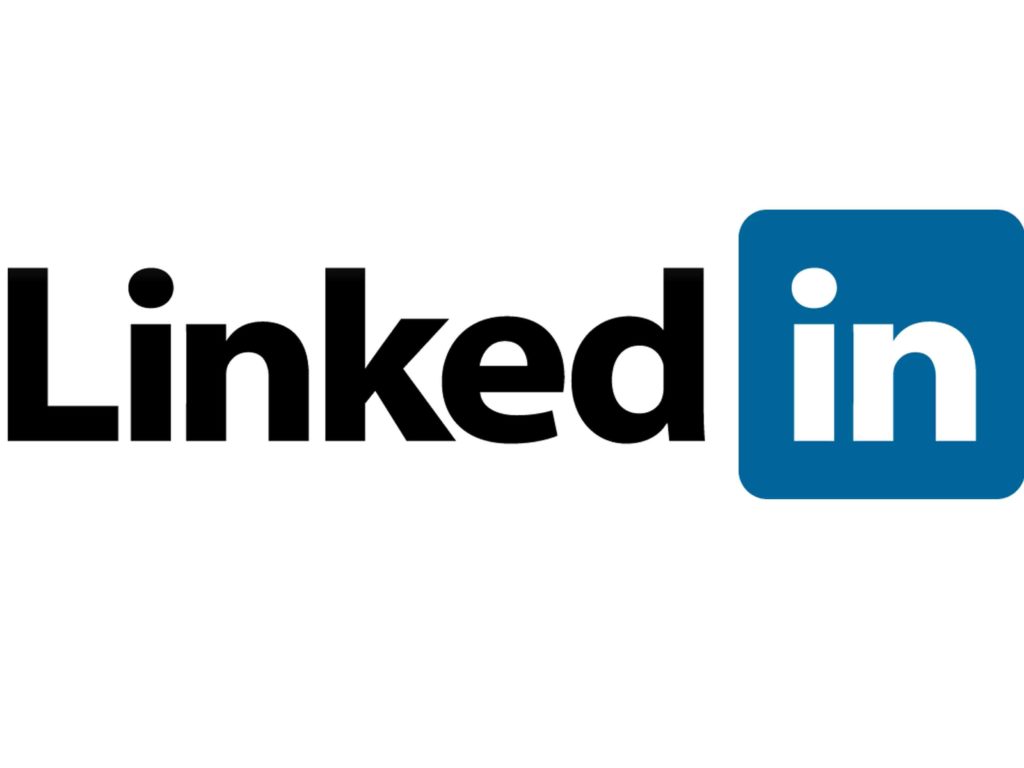
LinkedIn Ads Strategies That You Need to Be Using

LinkedIn Ads has some incredible features and targeting capabilities alongside its receptive audience. I’ve had B2B clients who even get better results on LinkedIn than they do on Facebook or Instagram Ads, and for lower costs.
If you want to actually get those results, however, you need to be using the right strategies, just as you would with any other platform.
Just because it’s a B2B platform doesn’t automatically make your ad relevant or mean that people are interested, so test out the below strategies to see more results and gain traction on with your campaigns.
I’ve used each of these strategies myself or seen them executed from a client to great success.
LinkedIn Ads Strategy #1: Get Personal With Dynamic Ads
LinkedIn’s new dynamic ads are a powerful opportunity for marketers, and they’ve just rolled out to most advertisers. These ads allow you to scale incredibly personalized ads, increasing their attention-grabbing capabilities and their effectiveness.
LinkedIn’s dynamic ads will personalize the ad a user sees based on their publicly available information– including their name, their company name, and their profile.
These ads pretty much scream “HEY LOOK AT ME.” They’ve got your photo and your name, and that enough will make you pause.

In order to create your own dynamic ad campaigns, you’ll need to create a new campaign and choose the “Dynamic Ad” ad product.

Follower and Job ads under the Dynamic Ads option have preset templates that automatically fill in a user’s information as needed.
These templates are easy to use, and can be translated automatically. Custom text, unfortunately, won’t be auto-translated.

Aside from these small differences, campaign creation is the same as other ad campaigns.
LinkedIn Ads Strategy #2: Utilize Content-Styled Ads to Build Brand Awareness
If you scroll through LinkedIn, you’ll see many more much longer posts than you could ever imagine on Facebook, let alone other platforms with character counts like Twitter or Instagram.
It’s not just because you can type for longer, but because LinkedIn users are often more willing to engage with longer content if it’s relevant and valuable to them.
Ads that promote content marketing efforts can there do well on LinkedIn, especially when you’re targeting cold audiences and looking to build a relationship before hitting them with lead generation ads or aggressive sales ads.
Well-written content allows users to get to know your business and take away value from what you’re offering, which leaves a positive association that can be capitalized on later.

When you promote content on LinkedIn, you can get creative here, but keep the following best practices in mind:
- The “Learn More” CTA is the best bet.
CTAs do increase the effectiveness of any marketing element, after all, and it increases the likelihood that users click. It also emphasizes that this is a learning click and not a purchasing one.
- Promote content that promotes you.
You don’t necessarily want or need to be promoting a “10 Ten Reasons We’re the Best Company Ever” post, but having at least several mentions to what you do and how you can help further resolve pain points or problems is a plus. This does not need to be aggressively sales-oriented, but you should keep overall brand awareness in mind.
- Don’t forget to target correctly.
I’ve noticed that with content-based ads, some clients end up going for much more general, vague audiences than they normally do. While casting a wider net does help you catch more fish (and content is an excellent net!), it doesn’t do you a ton of good if you’re looking for salmon but getting 60% trout. Target users you would want to convert, eventually, because almost all other clicks are ultimately a waste of ad spend.
LinkedIn Ads Strategy #3: Use Your Ad to Highlight Brand Culture or Social Missions
Right now, everyone wants to purchase from, work with, and work for brands on a mission. An ethical, moral, world-peace-improving mission, that is. We all care about businesses who are making ethical decisions and who care about their communities– including their employees.
As a result, using brand awareness ad campaigns that highlight brand culture or your brand’s mission or social policies is an excellent way to go.
This is true regardless of whether you want to find new employees or new customers.

If you’re wondering how exactly to do this, take a look at the ad from Fifth Third Bank.
They don’t mention their products or services or have any fancy CTAs, but instead just simply announce that they’re partnering up with a few other organizations to create a fund to support minority and women-owned businesses.
They’re doing good things in the world, and they’re using it to build brand awareness and enhance their reputation.
LinkedIn Ads Strategy #4: Offer Immediate Value Propositions In Sidebar Ads
This is an important strategy for any ad campaigns, but it seems to be forgotten in LinkedIn.
Even if you’re running content-based ads, you need to immediately explain to readers why your ad is important to them. If it’s your product you’re promoting, great, explain why it’s important. If it’s a piece of content, still great! Explain what users can get out of it.
This really holds true for all ads regardless of placement, but it’s particularly important in the side column ads where your text really is everything. This is where your copywriting skills will come into play.
You want to offer value propositions that stand out, hopefully, set you apart from your competition, and answer that inevitably “but why should I” question users always ask about any action that you want them to take.
The ads in the screenshot below all do this well.

“Find better ways to use technology in business” is simple but straightforward. It’s immediately valuable to the target audience (me!, who is awful at technology and runs a business), and it explains why I should click. (I did). The Takumi ad also shows that promoting content can work well, and it sets itself apart by saying “the future of influencer marketing,” offering a different spin than just “influencer marketing.”
Interestingly enough, this more concise, detailed ad actually works best than the feed ad below, which comes across as clunky, poorly written, and doesn’t properly explain why users should request a demo.

Sure, “branded at scale” sounds great, but why this company? And why does someone need this service?
This doesn’t mean that you need to max out every character count, because you don’t.
The ad below from Chase shows that.

It immediately appeals to a pain point of business owners (not having enough time) and then offers their products as a solution. It’s a value proposition that’s made stronger by appealing to the pain point before it, and it doesn’t go on for ages.
LinkedIn Ads Strategy #5: Be Sure to Target Decision Makers
There’s an episode of the office where Pam wants a new office chair. Here’s the thing though– she could see every ad in the world for the best chairs ever, and it wouldn’t matter because she isn’t the decision maker. Michael is, so he needs to be the one seeing those ads instead.
This is actually a really common mistake on LinkedIn Ads. Too many businesses are focused on keeping their audiences large or trying to reach every single person who might ever use their product, and they end up wasting ad spend on people who may be interested but ultimately aren’t the decision makers. While it’s true that some of these non-decision makers could submit the product or service to the right person, the ad is going to be a lot more effective if it finds the right person from the get-go.
This can be difficult to do, but LinkedIn does have job title targeting features that makes it easier.
If you want to sell social media software to a business, for example, you don’t want to target the social media intern; you want to get in touch with the CMO or the social media manager. Go for the most senior positions possible.

I also want to point out that in this section, you’ll have an easier time finding “decision makers” when targeting freelancers, micro-agencies, or other extremely small businesses where there may be only 1-3 people working it. In these instances, everyone typically has more of a voice in what happens and why.
LinkedIn Ads Strategy #6: Be Strategic About Including or Excluding Company Followers
When you’re setting you targeting criteria, you’ll see the option to include or exclude users who already follow your company. There are good reasons to do both.
If you decide to include current company followers, you’ll be able to leverage that warmer connection.
Users will be more likely to engage with the ad, and may leave positive social proof. “I’ve done this course before, it was excellent!” is a comment that can go a long way towards encouraging other first-time users to convert or want to learn more. If you’re releasing new products or services or want additional sales on a certain promotion, that relationship will also benefit you there; warm leads always convert more often.

Excluding your current company followers, however, may increase the accuracy of your targeting.
If you want to run a video campaign designed to build brand awareness, you really don’t need to be showing that ad to existing users. You could end up paying for clicks or actions that won’t benefit you much, affecting your ad spend and your placements.
Consider what your goals are when you make this decision. Content-based ads can do well when including your target audience, but if you’re on a tight budget and looking for specific results from new potential customers or leads, stick to excluding.
LinkedIn Ads Strategy #7: Tell a Story With Your Ads to Increase Conversions
As a copywriter, this is one of my all-time favorite copywriting and ad strategies. And it is an actual strategy in addition to a copywriting technique, because you’re using the power of a story to create a specific, strategic impact on how customers view and remember your business or product.
A lot of people are under the misconception that storytelling doesn’t have a place in B2B marketing, but I vehemently disagree. Whoever said that business was personal, after all, is dead wrong, and almost anyone who has built a business, been fired, been hired, or even been passed over for a small raise can tell you that. We might research our business decisions differently and over a longer period of time, but never for a second think that those decisions are never emotional.
A great example of how to use storytelling to really make an impact is the ad below from Georgetown University.
They pair a video ad with enticing ad text, asking a question and then immediately answering it by offering an exclusive inside look into what your experience could be, too.

Having a current student talk about what they love about the program, how it’s affecting their life, and what they’re learning makes it all the more real. You can envision yourself in that classroom, talking to those professors, learning those lessons. It becomes more real, and this school suddenly becomes a standout because in half a second you had that mental image. And that image is now a memory that’s caught up in the hope and excitement that comes with a potentially big future.
Storytelling can be simple, but it should utilize some sort of emotion whenever possible. This ad captures the emotions of hope and excitement.
Video ad campaigns are particularly effective mediums for storytelling because you can use everything from the lighting to the background music to all work towards that single impact and memory. They also give you more room to tell a full story before a customer loses attention.
Conclusion
I want to note that LinkedIn Ads may not be the absolute perfect advertising fit for all businesses. That’s ok; no ad platform is truly perfect for every business out there, even if it’s just down to the cost.
That being said, they’re an excellent choice if they work for you, and B2B businesses, in particular, should take note, alongside those who are actively recruiting.
It’s also important to acknowledge that the copy you’re using on Google Ads or other ad platforms won’t necessarily work on Linkedin. People are more in the business-mindset, so using different offers, appealing to different points, and trying out different styles of copywriting is a good choice here.
In many cases, focusing on logical appeals with straightforward selling techniques are going to be the way to go as opposed to more emotion-based appeals like you might see in other ad platforms. Go heavy on the features and benefits, but keep the copy concise.
Testing will help you determine what’s most effective on this specific platform, which will be key to success.
And like all platforms, things can pick up steam once you figure out how to connect with your target audience in ways that they respond to, so don’t give up right away if the first couple campaigns aren’t where you want them to be just yet.








What do you think?